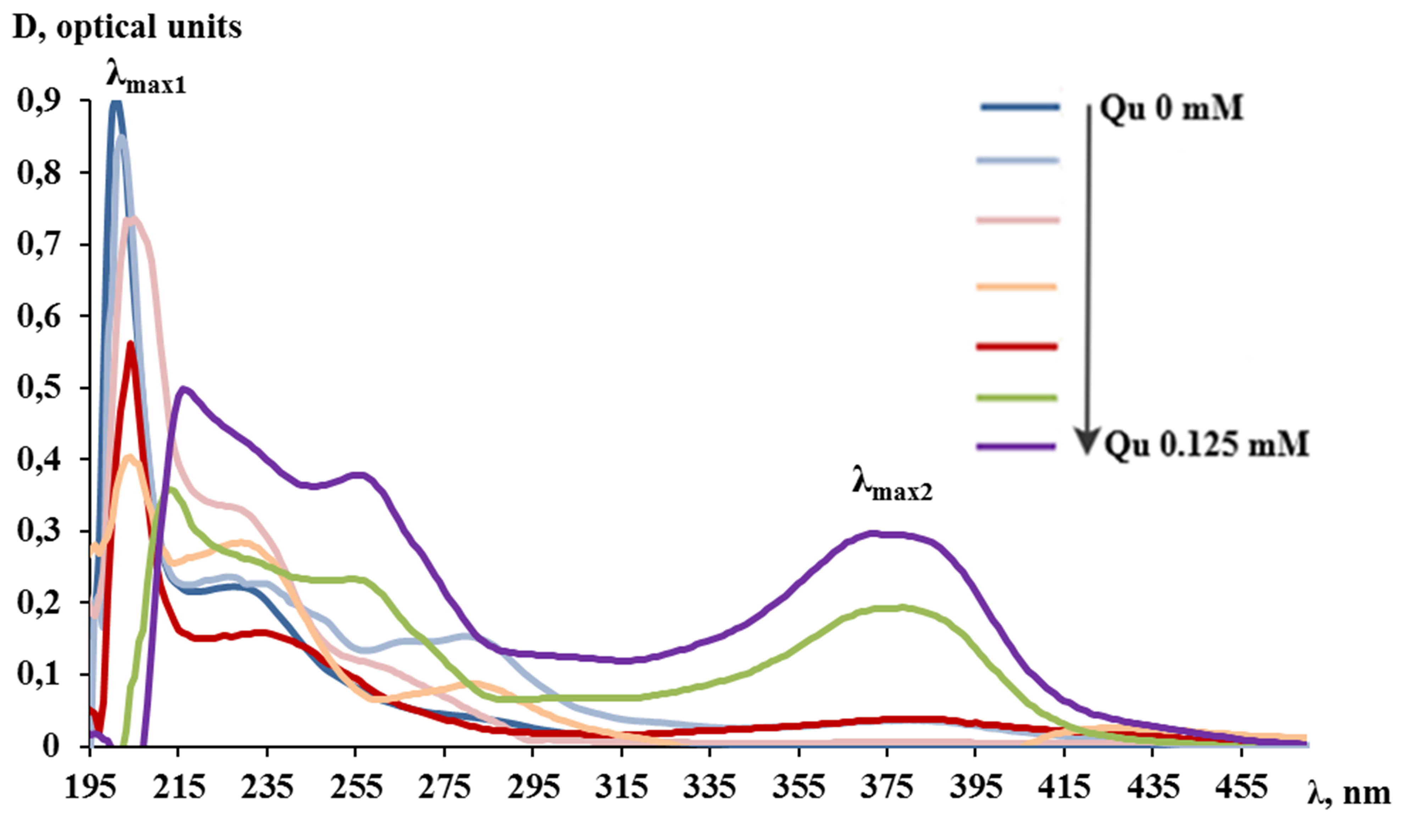
Synthesis and study of complexes of the novel Russian antiviral drug Camphecene with Plant’s Flavonoids
Abstract
Keywords
Full Text:
PDFReferences
Tolstikova TG, Tolstikov AG, Tolstikov GA. On the way to low-dose medicines. Herald of the Russian Academy of Sciences. 2007;77(10):447–53. doi:10.1134/S1019331607050012
Vetrova EV, Lekar AV, Filonova OV, Borisenko SN, Maksimenko EV, Borisenko NI. Study of molecular complexation of glycyrrhizic acid with chloramphenicol by electrospray ionization mass spectrometry. Journal of natural science, biology, and medicine. 2015;6(Suppl 1):40–3. doi:10.4103/0976-9668.166070
Yakovishin LA, Grishkovets VI. Intermolecular Interaction of Glycyrrhizin with Cholesterol. Chimica Techno Acta. 2020;7(4):180–5. doi:10.15826/chimtech.2020.7.4.08
Zarubaev VV, Garshinina AV, Tretiak TS, Fedorova VA, Shtro AA, Sokolova AS, Yarovaya OI, Salakhutdinov NF. Broad range of inhibiting action of novel Camphor-based compound with anti-hemagglutinin activity against influenza viruses in vitro and in vivo. Antiviral Res. 2015;120:126–33. doi:10.1016/j.antiviral.2015.06.004
Akram M, Tahir IM, Shah SMA, Mahmood Z, Altaf A, Ahmad K, Munir N, Daniyal M, Nasir S, Mehboob H. Antiviral potential of medicinal plants against HIV, HSV, influenza, hepatitis, and coxsackievirus: A systematic review. Phytother Res. 2018;32(5):811–22. doi:10.1002/ptr.6024
Dhama K, Karthik K, Khandia R, Munjal A, Tiwari R, Rana R, Khurana SK, Sana U, Khan RU, Alagawany M, Farag MR, Dadar M, Joshi SK. Medicinal and Therapeutic Potential of Herbs and Plant Metabolites / Extracts Countering Viral Pathogens - Current Knowledge and Future Prospects. Curr Drug Metab. 2018;19(3):236–63. doi:10.2174/1389200219666180129145252
Zupanets IA, Shebeko SK, Bezugla NP, Otrishko IA. Pathophysiological substantiation of the effectiveness of quercetine use in coronavirus disease (COVID-19) therapy. Pathologia. 2020;17(1):93–101. doi:10.14739/2310-1237.2020.1.203844
Derosa G, Maffioli P, D'Angelo A, Di Pierro F. A role for quercetin in coronavirus disease 2019 (COVID‐19). Phytotherapy Research. 2020;1–7. doi:10.1002/ptr.6887
David AVA, Arulmoli R, Parasuraman S. Overviews of biological importance of quercetin: a bioactive flavonoid. Pharmacognosy reviews. 2016;10(20):84–9. doi:10.4103/0973-7847.194044
Omar S, Bouziane I, Bouslama Z, Djemel A. In-Silico Identification of Potent Inhibitors of COVID-19 Main Protease (Mpro) and Angiotensin Converting Enzyme 2 (ACE2) from Natural Products: Quercetin, Hispidulin, and Cirsimaritin Exhibited Better Potential Inhibition than Hydroxy-Chloroquine Against COVID-19 Main Protease Active Site and ACE2. V1 Cross Ref. 2020;1–24. doi:10.26434/chemrxiv.12181404.v1
Pan B, Fang S, Zhang J, Pan Y, Liu H, Wang Y, Li M, Liu L. Chinese herbal compounds against SARS-CoV-2: puerarin and quercetin impair the binding of viral S-protein to ACE2 receptor. Computational and structural biotechnology journal. 2020;18:3518–27. doi:10.1016/j.csbj.2020.11.010
Sokolova AS, Yarovaya OI, Shernyukov AV, Gatilov YV, Razumova YV, Zarubaev VV, Tretiak TS, Pokrovsky AG, Kiselev OI, Salakhutdinov NF. Discovery of a new class of antiviral compounds: Camphor imine derivatives. European journal of medicinal chemistry. 2015;105:263–73. doi:10.1016/j.ejmech.2015.10.010
Vavilin VA, Salakhutdinov NF, Ragino YuI, Polyakov NE, Taraban MB, Leshina TV, Stakhneva EM, Lyakhovich VV, Nikitin YuP, Tolstikov GA. The Cholesterol Lowering Properties of the Complex Compound Simvastatin with Glycyrrhizic Acid (Simvaglyzin) in Experimental Models. Biochem (Moscow) Suppl Series B: Biomed Chem. 2008;2(4):373–80. doi:10.1134/S1990750808040070
Khizrieva SS, Vetrova EV, Borisenko SN, Maksimenko EV, Borisenko NI. Synthesis and study of complexes of the novel Russian antiviral drug Camphecene with pentacyclic triterpenes of licorice. Chimica Techno Acta. 2020;7(4):192–8. doi:10.15826/chimtech.2020.7.4.10
DOI: https://doi.org/10.15826/chimtech.2021.8.2.02
Copyright (c) 2021 Salima Salimovna Khizrieva, Elena Vladimirovna Vetrova, Sergey Nikolaevich Borisenko, Elena Vladimirovna Maksimenko, Nikolay Ivanovich Borisenko

This work is licensed under a Creative Commons Attribution 4.0 International License.
Chimica Techno Acta, 2014–2025
eISSN 2411-1414
Copyright Notice







